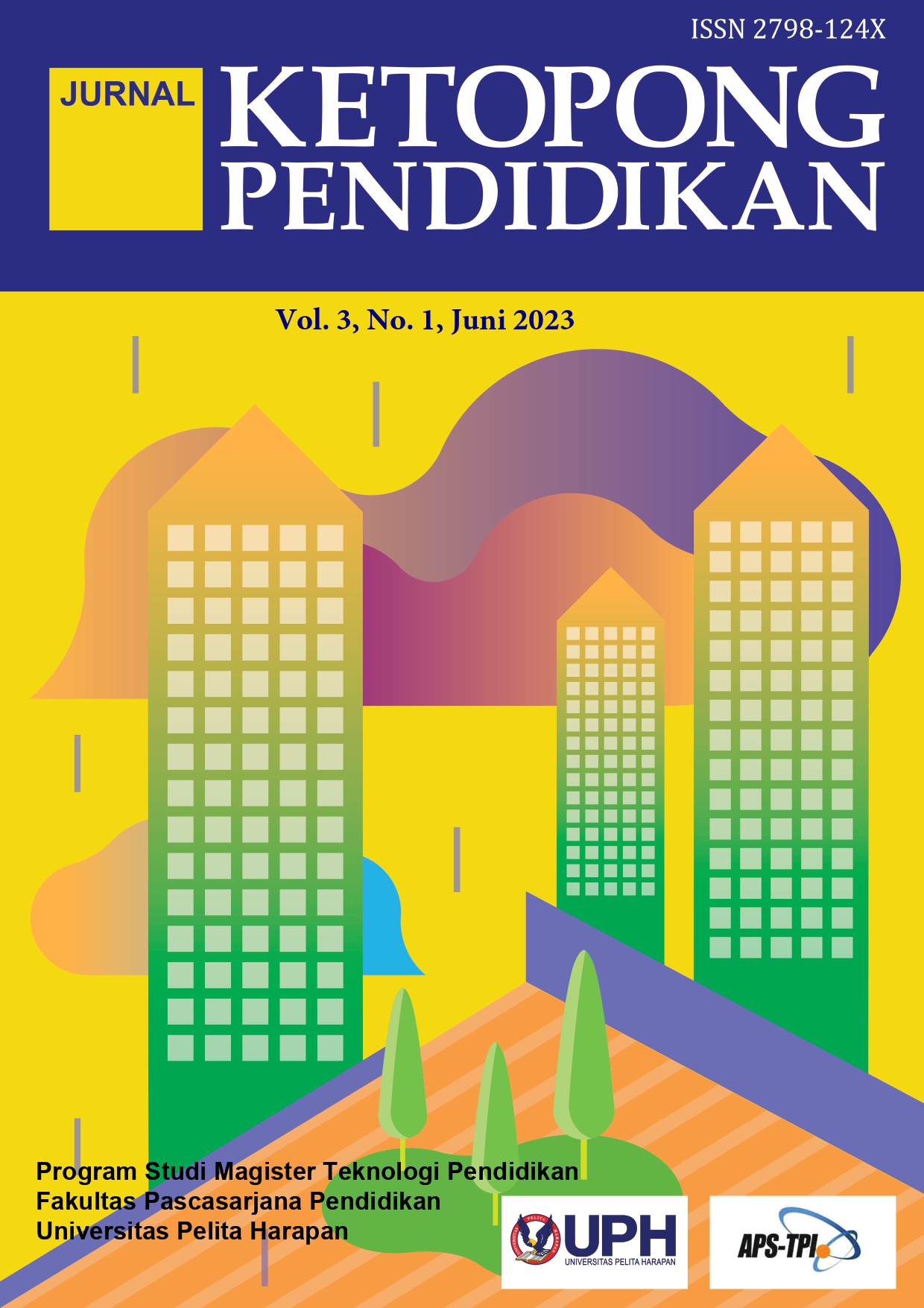Pengaruh Servant Leadership, Dukungan Tim, dan Kepercayaan Organisasi terhadap Kreativitas Guru di Sekolah Dasar XYZ Daan Mogot
DOI:
https://doi.org/10.19166/jkp.v3i1.10410Trefwoorden:
creativity, servant leadership, team support, organizational trustSamenvatting
Creativity is an important element that is highly needed in work for the progress and success of an organization. In the field of education, creativity is essential for teachers. Creativity is influenced by several extrinsic factors, including servant leadership, team support, and organizational trust. The purpose of this study is to examine the influence of servant leadership, team support, and organizational trust on teachers’ creativity. The research design employed is path analysis using a quantitative approach. The respondents consist of fifty two teachers, including all homeroom teachers and subject teachers at XYZ Elementary School, Daan Mogot, Jakarta. This study was conducted to determine whether servant leadership, team support, and organizational trust influence teachers’ creativity at XYZ School, with organizational trust serving as a mediating variable. In addition, the study also investigates whether servant leadership and team support influence organizational trust in XYZ School. The results indicate that servant leadership, team support, and organizational trust have a positive influence on teachers’ creativity.
Referenties
Adair, J. (2007). Leadership for innovation. Philadelphia: Kogan Page.
Champoux, J. E. (2011). Organizational behavior: Integrating individuals, groups, and organization. New York: Routledge.
Colquitt, J. A., Lepine, J. A., & Wesson, M. J. (2015). Organizational behavior: Improving performance and commitment. Organizational Behaviour. McGraw-Hill Education. www. mhhe. con.
Ghozali,engky I & Hengky, L. (2015). Partial least squares: Konsep, teknik dan aplikasi menggunakan program SmartPLS 3.0. Semarang: Universitas Diponegoro.
Gong, Y., Huang, J. C., & Farh, J. L. (2009). Employee learning orientation, transformational leadership, and employee creativity: The mediating role of employee creative self-efficacy. Academy of management Journal, 52(4), 765−778. https://doi.org/10.5465/amj.2009.43670890 Goorha, P., & Potts, J. (2018). Creativity and Innovation: a new theory of ideas. Springer.
Greenleaf., R. K. (2002). Servant leadership. New Jersey: Paulist Press.
Halbesleben, J. R., & Wheeler, A. R. (2015). To invest or not? The role of coworker support and trust in daily reciprocal gain spirals of helping behavior. Journal of management, 41(6), 1628−1650. https://doi.org/10.1177/0149206312455246
Hitt, M. A., Miller, C. C., Colella, A., & Triana, M. (2017). Organizational behavior. John Wiley & Sons.
Horsman, J. H. (2018). Servant-leaders in training. Cham: Palgrave Macmillan,.
Jaiswal, N. K., & Dhar, R. L. (2017). The influence of servant leadership, trust in leader and thriving on employee creativity. Leadership & Organization Development Journal, 38(1), 2−21. https://doi.org/10.1108/LODJ-02-2015-0017
Karatepe, O. M., Ozturk, A., & Kim, T. T. (2019). Servant leadership, organisational trust, and bank employee outcomes. The Service Industries Journal, 39(2), 86−108. https://doi.org/10.1080/02642069.2018.1464559
Kurniawan, A. (2018). Metodologi penelitian pendidikan. Bandung: PT. Remaja Rosdakarya.
Laub, J. (2018). Leveraging the power of servant leadership. Florida: Palgrave Macmillan.
Martin, L., & Wilson, N. (2018). The Palgrave handbook of creativity at work. London: Palgrave Macmillan. https://link.springer.com/book/10.1007/978-3-319-77350-6 McLoughlin, C., & Miura, T. (2017). True Kaizen: Management's role in improving work climate and culture. Productivity Press.
McShane, S., & Mary, A. V. G. (2018). Organizational behavior. New York: McGraw-Hill Education.
Mumford, M. (2012). Handbook of organizational creativity. California: Elsevier Inc.
Nyden, J., Vitasek, K., & Frydlinger, D. (2013). Getting to we: Negotiating agreements for highly collaborative relationships. Springer.
Rakasiwi, I. D. G. D., & Rahyuda, A. G. (2017). Pengaruh servant leadership terhadap organizational citizenship behaviour dengan mediasi trust in leadership pada karyawan the Lodek Villas. Jurnal Bisnis dan Kewirausahaan, 13(2), 107. http://dx.doi.org/10.31940/jbk.v13i2.701
Roberts, G. E. (2015). Developing Christian Servant Leadership. New York: Palgrave Macmillan.
Robbins, S. P., & Timothy, J. A. (2011). Organizational behavior (Fourteenth). New Jersey.
Saunders, M. N. K., Skinner, D., Dietz, G., Gillespie, N., & Lewicki, R. J. (2010). Organizational trust: A cultural perspective. Cambridge University Press.
Sawyer, R. K. (2012). Explaining creativity: The science of human innovation. New York: Oxford University Press.
Sendjaya, S. (2015). Personal and organizational excellence through servant leadership. Switzerland: Springer.
Shockley-Zalabak, P. S., Morreale, S., & Hackman, M. (2010). Building the high-trust organization: Strategies for supporting five key dimensions of trust (Vol. 7). John Wiley & Sons.
West, M. A. (2012). Effective teamwork. United Kingdom: BPS Blackwell.
##submission.downloads##
Gepubliceerd
Nummer
Sectie
Licentie
Copyright (c) 2025 Eloise

Dit werk wordt verdeeld onder een Naamsvermelding-GelijkDelen 4.0 Internationaal licentie.
Authors who publish with this journal agree to the following terms:
1) Authors retain copyright and grant the journal right of first publication with the work simultaneously licensed under a Creative Commons Attribution License (CC-BY-SA 4.0) that allows others to share the work with an acknowledgement of the work's authorship and initial publication in this journal.
2) Authors are able to enter into separate, additional contractual arrangements for the non-exclusive distribution of the journal's published version of the work (e.g., post it to an institutional repository or publish it in a book), with an acknowledgement of its initial publication in this journal.
3) Authors are permitted and encouraged to post their work online (e.g., in institutional repositories or on their website). The final published PDF should be used and bibliographic details that credit the publication in this journal should be included.


